Amherst’s Neighboring Towns: Belchertown
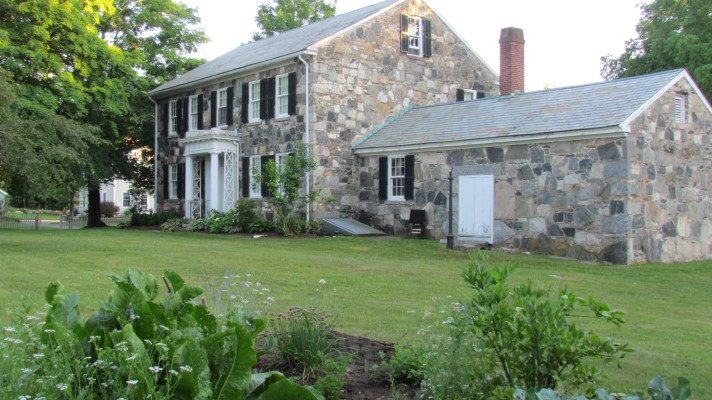
Stone House Museum, Belchertown. Photo: Belchertown Historical Association
Amherst History Month by Month
This column is the fifth in a 10-part series about towns surrounding Amherst. Previous columns covered Pelham, Shutesbury, Sunderland, and Hadley. For a listing of all previous “Amherst History Month by Month” columns, look here.
I want you to imagine you are standing inside the recessed balcony of an historic house overlooking the town common in Belchertown. You are at 38 Park Street and it’s 1880. A soldiers monument, dedicated to those who served in the Revolutionary and Civil Wars, is still in the works and will be finished in 1885. (In more recent years 38 Park Street has served as the Congregational Church Parsonage and as a Bed and Breakfast.)
You have come by train from Amherst to a distinctive Gothic Revival “cottage” and the house is large, fancy and spacious with a Queen Anne addition in back. (If you want to read more about a Gothic Revival cottage there is one in Woodstock, CT owned and operated as a house museum by Historic New England.)
There’s a festive gathering on the common; everyone listens to the Belchertown Brass Band playing at the new bandstand. As a guest of Susan Dwight Shaw Bridgman and Calvin Bridgman, you are in with a chance to better yourself. Mr. Bridgman is a town elder who was variously a Customs House officer in Boston, a State representative (1852), the town Selectman (1848, ’49 and ‘51) and its Postmaster. Calvin Bridgman was also a local merchant and part owner with Elijah Bridgman in the commercial enterprise that was once the Bridgman Block also on the common.
The lucky couple, who married in 1838, were given land on the common by Susan Dwight Shaw’s parents and had the house built in 1846. The house may well have been designed by an architect, but his name is not recorded, which is a pity as it is a very unusual house of its type.
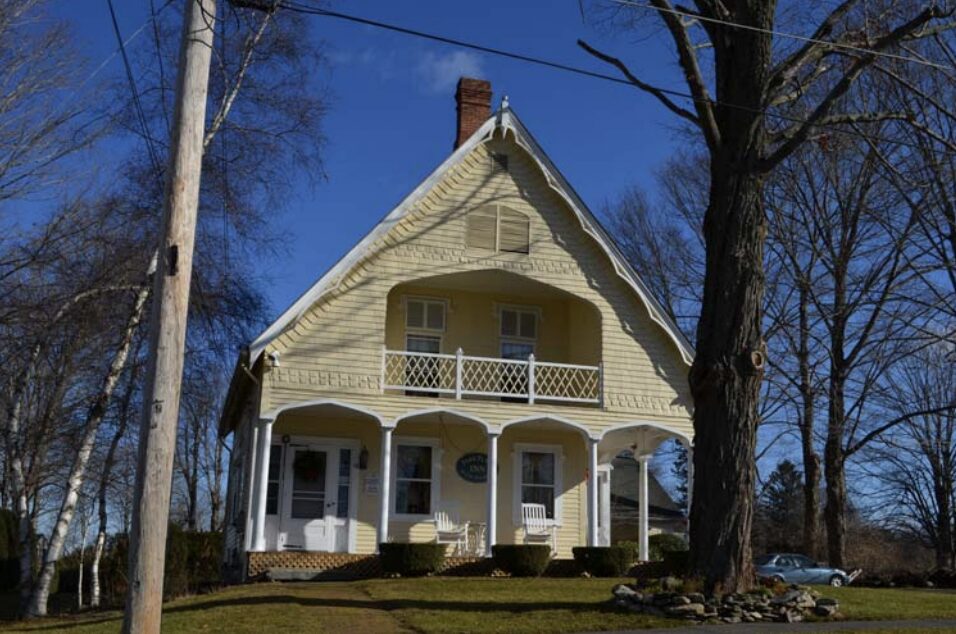
The story gets more interesting because Mason and Susanna (Dwight) Shaw were Susan Dwight Shaw’s parents and they lived almost next door at 32 Park Street. Their house became linked – specifically to Susan Dwight Shaw – in a famous rescue-from-slavery kidnapping incident in 1840, that became a major local news story at the time. While her parents lived mostly in Castine, Maine, their daughter and new husband became responsible for their servant, Angeline Palmer who had been born a free black in the Amherst almshouse probably in 1829. According to the Pioneer Valley History Network, “Her mother died of smallpox in 1831 when Angeline was about two years old. Her father, Solomon Palmer, does not appear in town records after 1834. Angeline was considered a ward of the town and as was [allowed] in those days, the Amherst selectmen hired out Angeline as a servant to defray the cost to the town. She was “bound out” to [Squire] Mason and Susanna (Dwight) Shaw of Belchertown, Massachusetts.”
Belchertown is one of the largest towns in the state by area, while Massachusetts is one of the smallest states in our country. Belchertown has been bordered by the Quabbin Reservoir since 1938. Like other towns surrounding Amherst, it has an interesting history including native sites (mostly Nipmuck), significant landscapes, ponds and trails (Jabish Brook Conservation Area has several mature seed trees), and a town center of particular interest to me, as can be seen in the flight of fancy with which this article began.
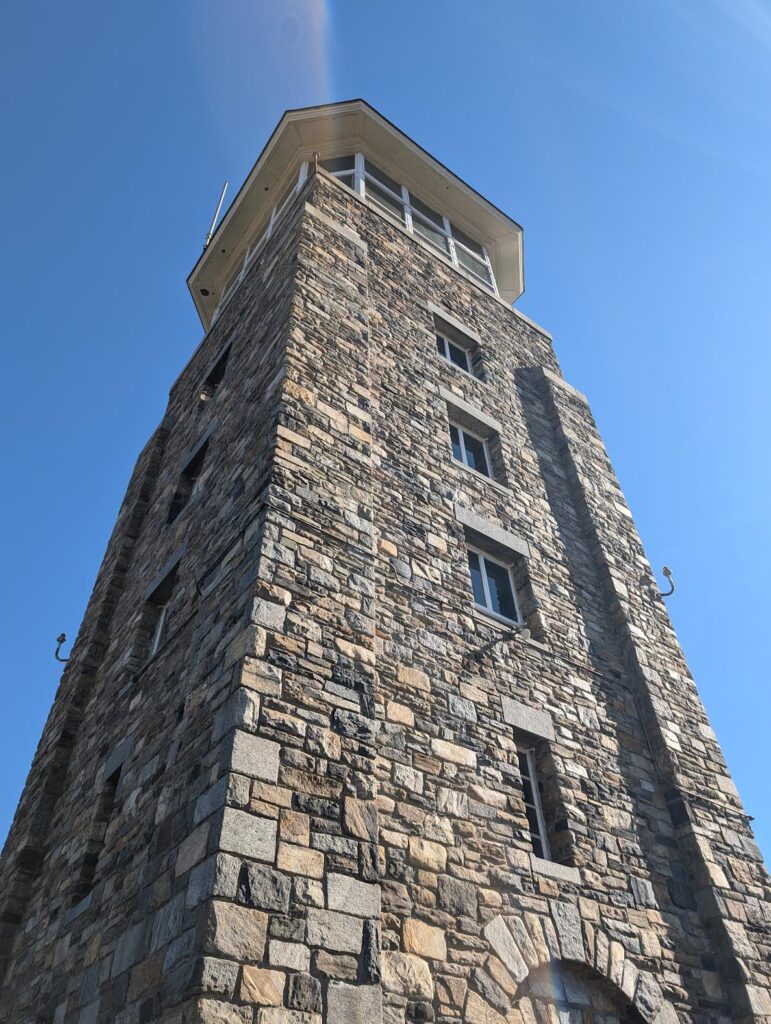
Belchertown borders Amherst by places that no longer exist like Pansy Park and Dwight (see also here), though Dwight Cemetery most certainly does exist in North Belchertown where Dwight Chapel is located. (Note: Dwight is the subject of a lecture this Thursday (11/14) at the Clapp Memorial Library. (see also below)
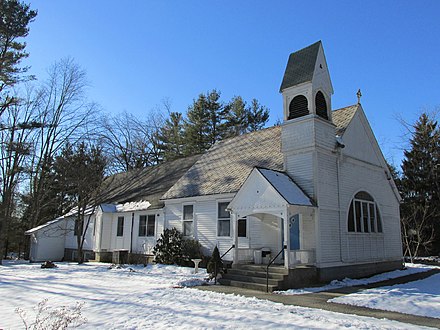

The southernmost edge of the watershed of the Fort River, the longest free-flowing tributary of the Connecticut River, runs near here while nestled in the south-east is the well-known UMass Cold Spring Orchard. In one source, I read that some mid-19th-century Belchertown residents took part in the Utopian “experiment” at Oneida, NY. This community existed from 1848-1881, practiced the rites of the early Christian church and followed the teachings of John Eliot Noyes, who believed that Jesus Christ returned in 70 CE. They were known as “Perfectionists” and lived in the center of town.
Historic buildings, historic organizations and fascinating family histories all interconnect in Belchertown. One place where this is evident is at the Stone House Museum that is usually open to the public May through October for programs and/or tours. The Stone House, once a private home like the Bridgman’s cottage mentioned above, now contains the collections of the Belchertown Historical Association (BHA) and its extensive archives. The distinctive grey stone house dates from 1827 and was built as a wedding present by Jonathan Dwight for his daughter Julia Diantha. It is located near the town common, on Maple Street, the road that leads downhill to the town’s railroad depot. The railroad came to Belchertown in 1853.
I want to share how the museum came about as it demonstrates one of the ways in which many women had public lives before they had the right to vote in this country. Two people started the BHA in 1903, Lucy Doolittle Thomson and her father, Dr. George Thomson and the inaugural meeting was held at their home. Another of the first trustees was Susan Dwight Bridgman and there was also a Mrs. Harriette Dwight Longley. She, too, is an important part of this story. At first, Belchertown’s historical association held its meetings and its holdings in the basement of the beautiful Richardsonian Revival-style Clapp Memorial Library that opened in 1887 and is on South Main Street. The stained-glass window on the northside of the library showing St Cecelia, muse of music, was given in memory of Calvin Bridgman whose house we were ‘visiting’ at the beginning of this article.
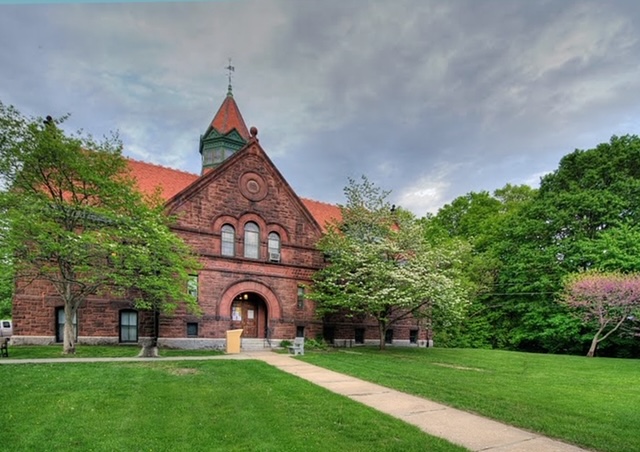

For the Dwight house to become a museum, Lucy Doolittle supervised its renovation into the Stone House Museum. But it was Mrs. Harriette Dwight Longley who left in her will her own house/estate to be sold for the creation of the museum. As it turns out, Lucy Doolittle Thomson, born in Belchertown in 1869, was a graduate of Smith College. She then became a student at the Massachusetts Institute of Technology where she received a degree in Architecture in 1896. MIT had begun admitting women in 1871.
Thomson worked as an architectural draftsman for more than 20 years in places like Springfield, Boston and Pittsfield. She kept ties with her birth town where she also inaugurated another organization, this time with her mother, known as the Arts and Crafts Society with the “hope of adding to the interest and profit of life in a country town,” Perhaps taking inspiration from leaders of the regional arts and crafts movement, at Old Deerfield, this society excelled at one popular craft activity: rug hooking. “Hookers” such as Mary Jackson often made rugs using designs by Lucy Thomson that she labeled “Subbkashe.” The Society held annual exhibits, and members – who made articles in their homes – sent their work to exhibits and craft shops in other parts of the state, including Boston.
In the 1920s the Stone House museum added another building to its campus, this time designed from scratch by Lucy Thomson. This came about in an interesting way. The son of a barber in town, a Mr. Gaston Plantiff, was the Northeast Regional Manager for Ford Motor Plants, based in New York, and became Henry Ford’s “right-hand man” during the early days of the automobile industry. During the 1920s, while on a visit to Belchertown with Plantiff, Ford visited the Stone House, and gave money for the building of the Ford Annex, which houses some of the carriages made in Belchertown.
It is appropriate that they ended up here. The soils in this area have not been known to be good for agriculture historically. Instead, Belchertown became known over time for the manufacturing of carriages. Although no buildings from this early industrial era survive in material form, the homes of blacksmiths, harness makers and wheelwrights still exist. Belchertown is in fact known as “the Detroit of the carriage industry.” Lastly, the Stone House Museum acquired the Washington Street wood frame schoolhouse building recently and moved it to the campus. It is being restored and used for education programs and lectures. The museum is currently running a fund drive to raise the $150,000 needed to complete the project.

Talking of schoolhouses, on the side of town that borders Granby, is the large and historic State School complex, once the largest employer in town, that closed in 1992. It is certainly a place to watch in terms of how the town handles historic preservation issues with stately buildings that are no longer fit for their original purposes. An Economic Development and Industrial Corporation (EDIC) formed to market the site and attract development to the area.
Origins of the Name Belchertown
I am a little world-weary when it comes to explanations of the origin of the names of some New England towns. In the case of Belchertown, it’s hard not to be reminded both of ‘belching’ and the presence yet again of those ‘bloody colonials’ – from England- who get their name in lights in some towns due to their leadership positions before the Revolution. In the case of Belchertown, it is known that land here was granted (in something called the Equivalent Lands deal to Jonathan Belcher, who was to become a Royal Governor (or Gouverneur, from the Huguenot spelling) of Massachusetts. While this name was chosen in 1731, Belchertown was not incorporated until 1761 and at that time, founders came up with a much more pleasant name, that of Cold Spring. This sadly didn’t last, and the name changed again to Belcher’s Town, and then back to Belchertown.
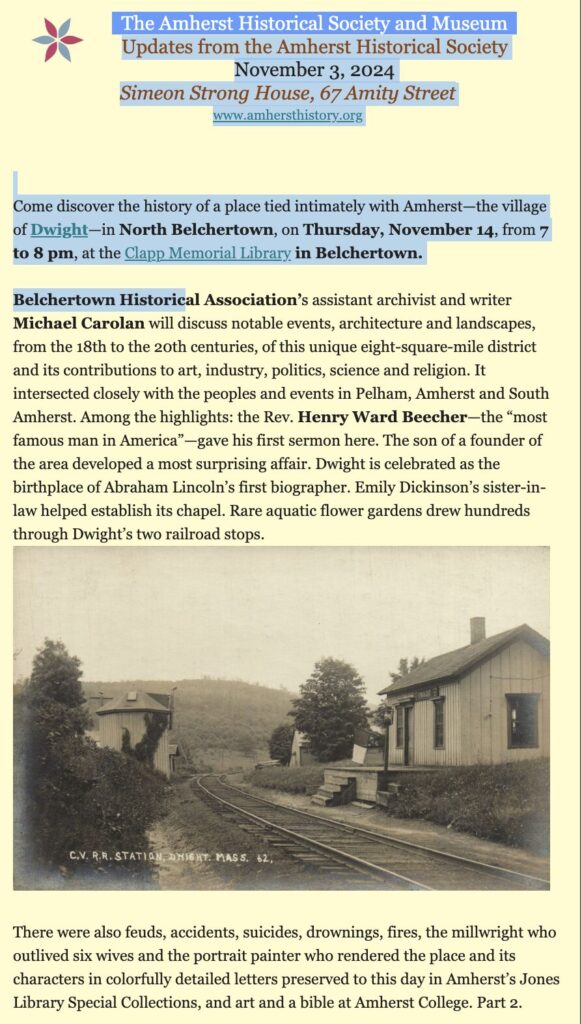

Thank you Hetty. I love reading these articles.
Thanks, Janet!
While I am ‘here’, another local preservation project in Belchertown is being championed by the Quabbin Art Association. They are participating in raising funds to save the Yellow Barn at Lampson Brook Farm at the old Belchertown State School. Many of the artists have donated paintings done “en plein air” and at the farm, the sale of which will benefit repairing the horse barn, the Yellow Barn. ps://www.gofundme.com/f/save-historic-belchertown-barn-at-lampson-brook-farm
There is also a Land Back initiative for Belchertown in this region that is gaining momentum on behalf of the Nipmuc/k peoples. More information is here https://www.amherstbulletin.com/Nipmuc-leaders-WMSURJ-members-and-local-residents-have-launched-a-petition-asking-decision-makers-to-work-toward-the-rematriation-of-the-Lampson-Brook-Farm-in-Belchertown-49326701
The most recent post of Historic Northampton’s Facebook page (https://www.facebook.com/HistoricNorthampton) mentions items in their textiles collection that have a link via Jonathan Belcher to Belchertown. Such stories are nested and networked just beyond plain sight.